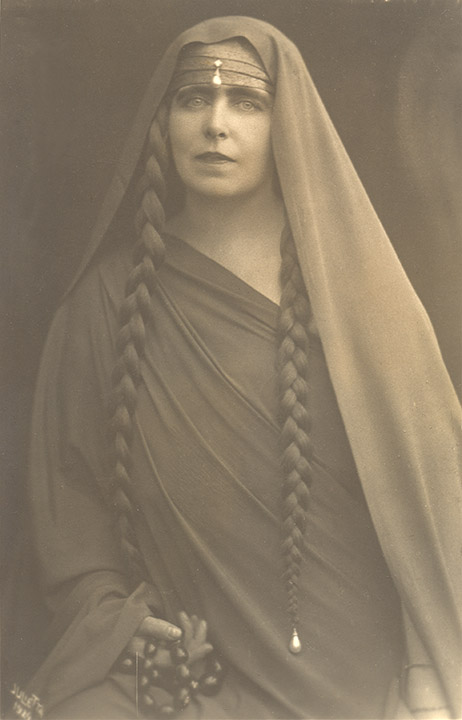One of the most enigmatic people of the twentieth century was Marie Queen of Romania, one-time owner of Dracula castle, Bran Castle which was one of her favourite retreats. In all respects a reincarnation of the sprit of a Byzantine Queen, Marie cut a figure like no other since the days of Queen Theodora of Byzantium.
 |
| The Empress Theodora at the Colosseum, oil painting by Jean-Joseph Benjamin-Constant |
 Marie was one of the most colorful figures in European history, one of Queen Victoria of Englands five grandchildren and the person who refused George V of England's hand in marriage. Crown Princess between 1893 and 1914, she became immediately popular with the Romanian people. She was named Marie Alexandra Victoria, after her mother and grandmothers, but she was informally known as "Missy".
Marie was one of the most colorful figures in European history, one of Queen Victoria of Englands five grandchildren and the person who refused George V of England's hand in marriage. Crown Princess between 1893 and 1914, she became immediately popular with the Romanian people. She was named Marie Alexandra Victoria, after her mother and grandmothers, but she was informally known as "Missy".
As a grandchild of the reigning British monarch in the male line, Marie was formally styled "Her Royal Highness Princess Marie of Edinburgh" from birth.
The Duke of Edinburgh wrote that his daughter "promises to be as fine a child as her brother and gives every evidence of finely developed lungs and did so before she was fairly in the world."
Prior to 2009, many of Marie's personal belongings were on display at Bran Castle, her residence in her later years, which functions as a museum. That year, when the castle was legally restored to Princess Ileana's heirs, the Culture Ministry moved the collection of her items to a nearby building, Vama Medievală, which is also open to visitors.
The Maryhill Museum of Art holds a permanent exhibition titled "Marie, Queen of Romania"; this display includes the queen's coronation gown, a copy of the crown, silverware, gilt furniture and jewelry, among other items.
Background in brief
In Romania, Marie is known by the nickname "Mama Răniților" (Mother of the Wounded), or simply as "Regina Maria", while in other countries she is remembered as the "Soldier Queen" and "Mamma Regina".
Even before her ascension as queen of Romania, Marie had succeeded in establishing her public image as that of "one of the best-looking and richest princesses in Europe".
She was known primarily for her talent in horse-riding, writing, painting, sculpting, dancing and for her beauty.
Her popularity was dimmed by two slanderous campaigns: that conducted by the Central Powers during World War I; and that led by communist officials after Romania's transition to a Socialist Republic in 1947.
During Romania's 42 years under communist rule, Marie was alternately depicted as either an "agent of English capitalism" or as a devoted patriot who believed that her destiny was intertwined with that of Romania. Marie's supposed extramarital affairs were brought forward as evidence of promiscuity, which contravened communist values. In 1968, communist officials vandalised the chapel sheltering Marie's heart, opening the sarcophagus and taking the boxes as well as the heart into Bran Castle. In 1971, these were transferred to Bucharest's National Museum of Romanian History. It was not until the late period of Nicolae Ceaușescu's regime, the last years before the Romanian Revolution, that Marie's merits came to be acknowledged. Queen Marie of Romania will be figured in The Elements, as will Bran Castle.
During Romania's 42 years under communist rule, Marie was alternately depicted as either an "agent of English capitalism" or as a devoted patriot who believed that her destiny was intertwined with that of Romania. Marie's supposed extramarital affairs were brought forward as evidence of promiscuity, which contravened communist values. In 1968, communist officials vandalised the chapel sheltering Marie's heart, opening the sarcophagus and taking the boxes as well as the heart into Bran Castle. In 1971, these were transferred to Bucharest's National Museum of Romanian History. It was not until the late period of Nicolae Ceaușescu's regime, the last years before the Romanian Revolution, that Marie's merits came to be acknowledged. Queen Marie of Romania will be figured in The Elements, as will Bran Castle.
Links
http://en.wikipedia.org/wiki/Marie_of_Romania
https://en.wikipedia.org/wiki/Theodora_(6th_century)






No comments:
Post a Comment